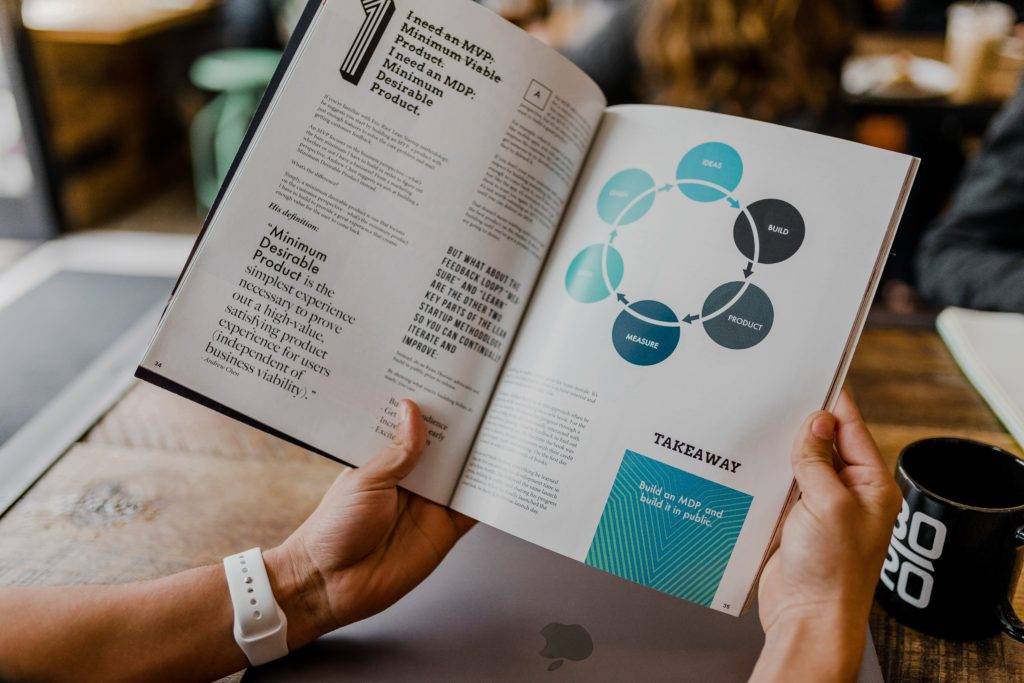Listening carefully to your customers and prospects helps you close more deals and achieve sales success.
But what are you listening for? You’ve got to be able to discriminate between the vital insights that will help you close the deal and more general information of limited or secondary value.
The former category - those clues that let you know you’re dealing with someone who has purchase intent - are called buying signals.
By learning to identify customer buying signals (and knowing how to respond correctly to them), you can accelerate purchasing decisions, quickly closing the gap between your customer’s problem and the solution you provide.
With the help of some of the world’s leading sales experts, we’re going to show you the most common verbal and non-verbal buying signals you should look for. We’ll also leverage that expertise to provide you with the ideal response to these signals.
What is a buying signal?
A buying signal is any behavior that demonstrates that a prospect is actively considering purchasing from you. This behavior can take different forms - a buying signal can be verbal (a revealing statement or question), physical (body language) or circumstantial (the buyer takes action that signifies intent).

Buying signals can also be categorized as weak or strong. B2B sales legend Anthony Iannorino makes this distinction, arguing that weak signals provide a clue that there’s purchase intent, but require the salesperson to dig a little deeper. In contrast, strong signals provide a high level of clarity about what your clients believe they want or need.
A good salesperson will identify and respond to buying signals early in the sales process, significantly increasing the sales deal velocity.
Most common sales buying signals
We’ve pulled together six of the most common buying signals to look for in your sales conversations. These are universal signals that can be observed during the sales process of almost any industry.
You may notice that ideal customers in your market are predisposed to giving off certain buying signals more often - this is really useful, as you can then add this information to your sales engagement and enablement programs, buyer persona profiles, and sales playbooks.
#1 Asking good questions
Sometimes, the best customers can be initially very demanding. If a discovery call leaves you feeling bruised, take comfort from sales trainer, Anthony Iannorino.
“That call went better than you think it did. Difficult, challenging, and intense questions are buying signals. They are not the signals of someone who is not interested in change. In fact, the opposite is true; the people who are not interested in changing don’t say much at all.”
Fortune 500 sales leader Mark Hunter concurs.
"A customer will show they are engaged by asking questions. The more engaged and the more motivated they are, the better the questions they will ask you."
Questions like ‘Why should we choose you instead of your competitor?’, or ‘Can you tell me reasons why customers end their contract with you?’ can be challenging if you’re unprepared - but they offer an opportunity to build trust through honest, transparent responses.
#2 Talking about budget
A willingness to openly discuss the budget during sales discovery calls is a surefire indicator of purchase intent. But if your prospect seems vague, and unresponsive to budget-related conversation starters, it’s not necessarily a red flag - especially if your prospect is a decision maker with the power to reallocate budget. Jill Konrath, B2B sales strategist and author, explains.
“The ‘What's your budget?’ question only works for planned purchases. They still haven't decided if they're going to change from their status quo. They don't have money in the budget for new investments.“
How you deal with prospects who've already decided to change is fundamentally different from how you deal with those who could be tempted, but haven't yet committed to taking action.”
If you find yourself talking a prospect through an unplanned purchase situation, don’t be disheartened should they seem distracted, or end the call abruptly - this could indicate a need to assess their current budget distribution before further progress can be made.
#3 Willing to talk further
Systematically creating follow-up opportunities is a playbook essential. Each step in the sales process should contain a clear signpost to the next, and each call should end with a commitment to speak further. B2B buyers are busy people, and a willingness to proceed further in the sales process is a clear buying signal.
Business consultant and emotional intelligence coach Liz Wendling lays it out.
“When they agree to the next meeting, show up to that meeting, and keep their promises it is a clear signal that they are engaged and the process is important to them. Should they push off next meetings and tell you to call them but, you go into the “voicemail abyss,” it is the clearest sign of all that they are not that into you.”
#4 Reveals a genuine need
Not all of the buying signals listed here demand an immediate response - signs such as a willingness to talk further should be taken as a strong indication to continue implementing follow-up steps, as you would normally.
However, if your buyer reveals a genuine need (for which your product can provide a good solution) then you should immediately take the opportunity to communicate how you can meet their need. Keep asking the questions that will prompt them to define their problems in detail.
And as Mark Hunter says;
“Remember that the good insights are not going to come out right away. It probably won’t be until after your second or third question that really good information will unfold.”
#5 Happy to share key insights
Building trust and rapport is vital to the sales process, particularly for complex high-ticket B2B offers and buying processes. So open, transparent communication from a prospect offers a strong buying signal. As Liz Wendling says;
“When potential customers are willing to answer questions about their needs, wants, pains and struggles, they’re telling you that they have a problem and might need you to fix it. That is a really good sign they are interested in you.”
#6 Admits dissatisfaction with current suppliers
This is another buying signal that invites a specific response. If the prospect shares their frustration with their current provider or service, this is the perfect opportunity for a talented sales professional to explain how and why their specific product beats that of the current vendor.
This dissatisfaction can also manifest as a weak non-verbal buying signal - if, in the course of your discovery research (Thanks to strategic discovery questions), your prospect’s online materials disclose a negative opinion on either their current vendor or the general offer of those working in your space.
It’s worth checking their social media, Google Business Profile, and blog posts to see if there are any clues you can investigate further.

Most common non-verbal buying signals
Actions speak louder than words. To get all the information you need, it’s worth looking beyond what your prospect is saying and taking signals from what they’re doing.
#1 Body language
When meeting in person or on a video call, there’s a variety of ‘tells’ in your prospect’s body language that can indicate their feelings towards their current situation.
However, this isn’t always as simple as ‘big, happy smiles mean sales’. Often, when people are thoughtful, their ‘resting’ face can be misinterpreted as displeasure.
Keith Lubner, Chief Strategy Officer at Sales Gravy, offers an insightful breakdown of how six different aspects of non-verbal communication, including eye contact, tone of voice, and posture, can be evaluated.
The level of focus your potential buyer brings to a virtual meeting can also indicate the strength of their purchase intent. If they spend a lot of your meeting multitasking or checking their phone, this can indicate a lack of interest.
#2 Engagement with sales collateral
Some pundits would propose that any engagement with sales collateral and marketing materials constitutes a buying signal (whether it’s a social media comment, a follow-up response to a marketing campaign, a webinar attendance, or a white paper download). Anthony Iannarino disagrees.
”If you were to ask the people who download white papers whether they hoped to be immediately called by a salesperson, the percentage would be very, very low.”
However, while Iannorino argues, ‘you can’t trade these metrics for the real metrics like face-to-face sales calls’, it’s equally important not to discount an accumulation of evidence across touchpoints, particularly if it occurs across multiple channels (for example, social channels, combined with website case studies and downloadable content).
Using a sales collateral platform like Qwilr means you can track the user’s engagement via sales analytics, to get a better idea of what your prospect is looking for.

#3 Speedy response times
A prospect who consistently responds to your calls and emails within a couple of hours sends a strong buying signal - this purchase is clearly near the top of their to-do list.
In an increasingly hectic world of professional communications, attention is in short supply, so don’t underestimate the purchase intent demonstrated by this kind of engagement. At the very least, respond in kind by answering their messages just as promptly.
#4 Evidence of research
While this buying signal may become evident during a sales conversation, we wouldn’t class it as a verbal signal. Evidence of research can be deduced from a range of verbal or non-verbal behaviors, including the questions asked, the sales collateral they engage with, or the sales team members they reach out to (contacting sales engineers directly, for example, or asking for their input on the proposal).
It’s important to identify and acknowledge this research - as well as accelerating the sales cycle, the prospect is making your job easier by progressing more quickly through the buyer’s journey.
#5 Company buying signals
These fall into the category of weak signals, as defined by Iannoci, insofar as the sales professional needs to investigate further.
However, independent research into your prospect and their buying group can provide insights to help you craft the perfect proposal to address their pain points - even when they haven’t expressed them.
Staying abreast of developments such as new rounds of funding, leadership changes, or mergers can provide intent data and allow you to anticipate the likely needs of your prospective customer.
Tools such as UserGems or LinkedIn Sales Navigator are invaluable for this kind of research.

How to react to strong buying signals
Even though strong buying signals provide a high degree of clarity about what your prospect needs from your solution, it’s only useful if you know how to respond and quickly solve your customer’s need.
“Strong signals are easy to identify, but you still have to understand what you are seeing and hearing in a way that is actionable for you and your client…when a signal is strong, recognize it, then ask questions that let you get to the heart of the matter— whether the signal comes in the form of a statement, a question, or a behavior.”
Here’s how top sales professionals react to strong verbal and non-verbal buying signals.
- Are they willing to talk further? Don’t give them too much, too quick.
“The more information there is to look at, the less like a person is to read anything. To be effective, think about what your prospect needs next. Just next. Don't think about everything they'll need to know eventually -- or everything that you want them to know about.” Jill Konrath
- They respond quickly to your communication? Again, don’t be tempted to overload your comms for the sake of a quicker sale.
“As a salesperson, you can ask for time, information, or action in a text message. Ask for the meeting, the qualifying information you want, or an action from your recipient. Do not ask for all three or for multiple things in one exchange.” Jeb Blount
- Talking about budget? It’s great if they offer information unprompted - but be careful how you probe, and don’t be discouraged if they can’t give you a figure.
“I’d not tell you to directly ask them that, but I am saying that you have to be willing to probe quickly. This is why I like to ask, “How have you made decisions like this before?” With that question, I am looking for them to bring up how cost is a key part of their decision-making process.” Mark Hunter
“There is always untagged budget. You just have to find the person who has access and sell to them.” Trish Bertuzzi
- Talking about your competitors? Encourage them to talk more about the problems with their current provider (you can do this whether they’ve raised it or not).
A great way to differentiate yourself from your competitors is to avoid comparing yourself feature-by-feature - instead, ask about your prospect’s selection criteria. What do they value in a potential provider? Anticipate their answers, and if possible, provide additional criteria that they may not have considered. This will demonstrate your expertise, and provide value to the prospect.
‘It's a different story if I say, "I see that your company's sales have been stagnant the past few months. I have some ideas on how to increase new client acquisition." With that opening line, I will never be told, "We're already working with xyz company."’ Jill Konrath
Read the signals and use all the data at your disposal
With the advent of sophisticated sales engagement tools, smart sales teams are integrating the relationship insights of their sales reps with data-driven approaches that allow you to build a comprehensive picture of your customers and their needs in your CRM.
Buying signals provide a map to how our customers communicate their needs, which we can combine with sales analytics features in tools like Qwilr to explore what else our customers see in us.
Curious about how this works? Book a free demo today to experience Qwilr in action.
About the author

Dan Lever|Brand Consultant and Copywriter
Dan Lever is an experienced brand consultant and copywriter. He brings over 7 years experience in marketing and sales development, across a range of industries including B2B SaaS, third sector and higher education.
FAQs
Weak signals are statements, questions, or behaviors that don’t tell you much about what’s important to your contacts or which areas they’re struggling in. For instance, your client might say something like “We’re interested in learning about what other companies like ours are doing” or “We’ve just been a little disappointed in their results." But you also need to understand what’s motivating the weak signal, such as a lack of trust, not wanting to make a problem “real” enough to require action, fear of appearing ignorant, or not wanting to suggest or admit a mistake.”
- Anthony Iannoci
Verbal buying signals that signify purchasing intent can include;
- Asking good questions about the product
- Revealing information about budget or other key insights
- Expressing frustration with current solutions or suppliers
Even before a customer has announced their intention to buy, a talented salesperson can interpret their intention by reading verbal and non-verbal buying signals. These can include positive body language, evidence they’ve researched your products or services, or a willingness to take part in further sales calls and conversations.


